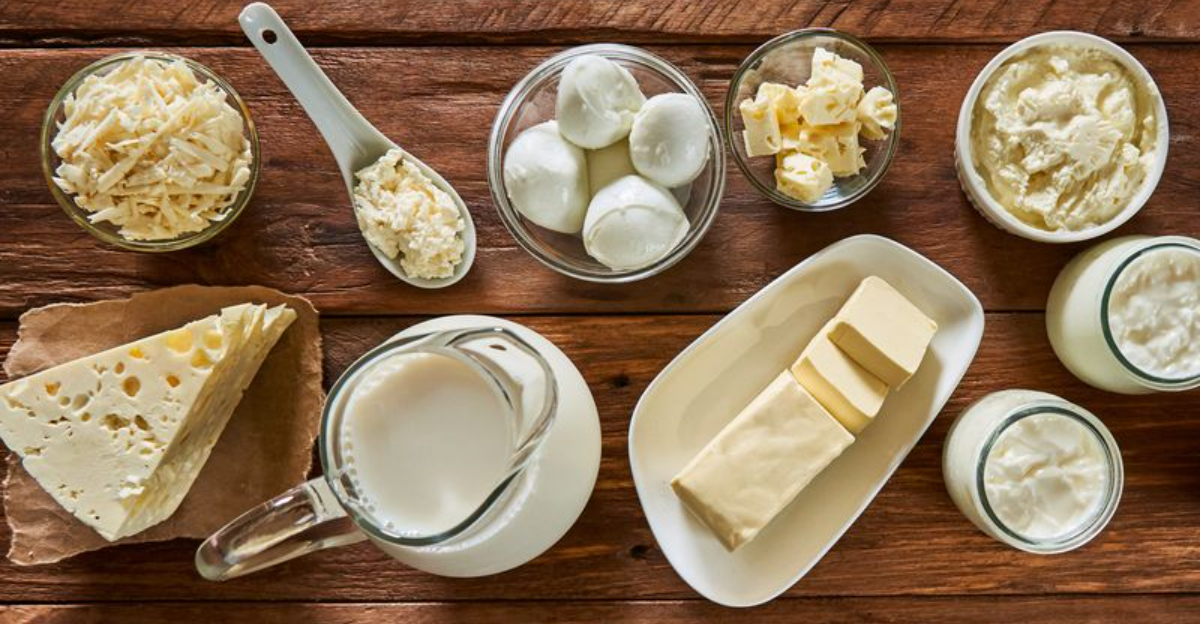Here’s How Long Eggs & Other Foods Can Actually Last In Your Fridge

Last week, I found myself squinting at a carton of eggs, unsure if the faded sell-by date meant trouble. Was that from last month? Yikes.
It’s a situation we’ve all faced, discovering a questionable item hidden in the back of the fridge and debating whether it’s still safe to eat. Food waste is frustrating, but so is the risk of getting sick. Over time, I’ve learned that many foods last longer than we think, while others expire faster than expected.
Understanding the true shelf life of everyday items can help you avoid waste, save money, and protect your health with confidence.
1. Eggs: The Breakfast Heroes With Staying Power
Fresh eggs are kitchen champions. Raw eggs in their shells can actually last 3-5 weeks in your refrigerator, much longer than most people think. I once successfully made a glorious birthday cake with eggs that were a full month old (still within their safe window).
The trick is proper storage. Keep eggs in their original carton rather than in those cute door compartments. The carton protects them from absorbing strong odors, and the consistent temperature at the back of your fridge extends their life.
Hard-boiled eggs are different though, they’re only good for about a week. When in doubt, try the float test: fresh eggs sink in water while old ones float.
2. Raw Meat: The Clock Is Ticking
Raw meat waits for no one. Ground beef, pork, and lamb should be cooked or frozen within 1-2 days of purchase. I learned this lesson the hard way after postponing my Sunday meatloaf plans, what a waste!
Whole cuts like steaks and chops give you a bit more breathing room with 3-5 days of refrigerator life. Color changes alone aren’t reliable indicators of freshness; trust your nose instead.
Store meat on the bottom shelf where it’s coldest and use a plate underneath to catch any drips. This prevents cross-contamination and keeps your fridge cleaner. When in doubt, remember: cooking won’t salvage spoiled meat.
3. Milk And Dairy: Sniff Before Sipping
Milk typically stays fresh about a week past its sell-by date, not the hour after opening as my grandmother insisted. I’ve rescued countless bowls of cereal by ignoring dates and using my senses instead.
Hard cheeses are refrigerator champions, lasting 3-4 weeks once opened and up to 6 months unopened. Parmesan is especially hardy, properly stored, it can last months. Soft cheeses like Brie or ricotta wave the white flag sooner, giving you about a week after opening.
Yogurt often stays good 1-2 weeks past its date. Store dairy products away from the door where temperatures fluctuate less. Remember: a quick sniff test usually tells you all you need to know.
4. Leafy Greens: The Fresh But Fragile Bunch
Leafy greens start their countdown the moment they’re harvested. Sturdy greens like kale and collards can last 5-7 days when stored properly, while delicate lettuce varieties surrender after 3-5 days. My game-changing discovery was storing them with a paper towel to absorb excess moisture.
Spinach is particularly temperamental, one day it’s perky, the next it’s a slimy mess in your crisper drawer. Pre-washed greens in those plastic containers typically last 3-5 days after opening.
The storage secret? Keep greens dry but not dehydrated. I wrap mine loosely in paper towels before placing them in a partially open plastic bag. This humidity sweet spot extends their crisp, fresh-tasting life substantially.
5. Berries: The Refrigerator’s Divas
Berries demand special treatment. These juicy gems typically last just 1-2 days before showing signs of surrender. Strawberries might give you 3-5 days, but raspberries and blackberries start deteriorating almost immediately.
My berry-saving revelation came when I started giving them a quick vinegar bath. Mix one part white vinegar with three parts water, soak berries briefly, then rinse and thoroughly dry. The vinegar kills mold spores without affecting taste.
Never wash berries until you’re ready to eat them, moisture is their enemy. Store them in a single layer on paper towels in a shallow container with the lid slightly ajar. This method has transformed my berry game, extending their life by several precious days.
6. Leftovers: The Three-Day Rule
Leftovers bring convenience but come with a ticking clock. Most cooked foods, whether Sunday’s roast chicken or Thursday’s pasta, remain safe for 3-4 days in the refrigerator. I once stretched some chili to day five and regretted it immensely.
Soups and stews follow the same timeline. Despite what your grandmother might claim, they don’t “get better” with age beyond that safety window. Cool foods completely before refrigerating to prevent bacterial growth and temperature fluctuations.
Clear containers work better than opaque ones, when I can see my leftovers, I’m more likely to remember they exist! Label containers with dates using masking tape. Trust me, memory fails when trying to recall if that pasta is from Monday or last Thursday.
7. Condiments: The Long-Lasting Flavor Boosters
Condiments are the marathon runners of your refrigerator. Commercially prepared mayo can last 2-3 months after opening, not the two weeks many of us fear. Ketchup and mustard hang in there for a solid 6 months, while jam and jelly stay good for about a year.
Salad dressings vary wildly, creamy varieties last about a month while vinaigrettes can go 2-3 months. My personal revelation was discovering that soy sauce doesn’t even need refrigeration (though I still chill mine for peace of mind).
Pickle enthusiasts rejoice. These vinegar-preserved treasures can last for months. The high acid content in most condiments acts as a natural preservative. Just remember to use clean utensils each time to prevent introducing bacteria to these long-lasting flavor heroes.
